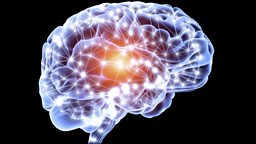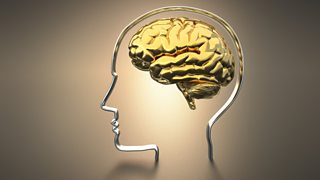Ten facts about the dark world of migraines
AL Kennedy has been exploring the often misunderstood world of the migraine. One billion people in the world are migraine sufferers, but we know very little about this debilitating ancient pain.

1. What is a migraine?
Well let’s start with what it isn’t - it isn’t a headache. Migraine symptoms can include any of the human senses, from phantom senses to tingling skin. Nausea and sensitivity to light, sound and smells are all common. Roughly three out of four migraineurs are female; migraines hate hormonal fluctuations. Lack of sleep and stress are both triggers, and migraines can become a repeating pattern.
Not everybody gets an aura (light or patches of blindness) in their vision…in fact, only 20% of people experience this. A lot of doctors incorrectly think the definition of a migraine means having an aura, which results in a lot of misdiagnoses. When experiencing a migraine, a person’s brain doesn’t work properly and that can last for days at a time.
2. What is happening inside your body when you have a migraine?
In essence, the normal processes that deal with sensory input from the body from around the head and the neck start to go awry. Signals are sent out to the blood vessels and various neurochemicals are released. The linchpin molecule in a migraine is called CGRP (Calcitonin Gene Related Peptide). That molecule is picked up by receptors around the blood vessels and that starts to generate pain. As the process goes on, other networks start to become engaged that may make us feel nauseous or sensitive to lights or noises, leading to other painful symptoms.

What does having a migraine feel like? AL Kennedy talks to migraineurs and neurologists to find out about the serious, and often misunderstood, condition.
3. It’s more common than you realise
Migraines are more common than you think. According to recent World Health Organization research there are one billion people who experience migraines in the world, and in the UK we don’t spend even £1 per patient on the problem. The migraine is ranked globally, by the World Health Organisation, as the seventh most disabling disease - responsible for 2.9% of all years of life lost to disability - and the leading cause of disability among all neurological disorders.

4. Can you stop a migraine?
We know that sleep is nature’s way of terminating a migraine, but we don’t know how that works. All the migraine drugs and other interventions, like botox or nerve blocks that try to reduce the frequency and severity of migraines, work by either preventing or damping down the processes that initiate migraines. Sometimes people find that certain foods or situations trigger migraines.
5. Are children affected?
Typically one child in every classroom will have headaches, essentially migraines. Children’s headaches are different – they can be short. You have to make inferences as they can’t tell you what is happening to them; they might just want a quiet room, not because they’re a bit grumpy but because they don’t like sound. Migraines can impact hugely on school attendance and children’s ability to study. AL Kennedy explained her first migraine as: “…a patch of total blindness in my left field of vision, which I was too shy to mention. Having compared notes, I find I'm not the only one to have had such an experience in adolescence.”
6. A migraine isn’t a modern phenomenon
The migraine may be as old as our species. It doesn’t stop people from reproducing, so it hasn’t ever been weeded out by evolution. There are Neolithic cave drawings which resemble the visual disturbances some migraineurs suffer. 12th century abbess Hildegard of Bingen is claimed as a migraineur. Hildegard took her visions to be both religious and medical. The inventor of the kaleidoscope, Sir David Brewster, had migraines. The author Lewis Carrol is often sighted as a migraineur. There’s even an Alice in Wonderland Syndrome. This is a very rare type of migraine where a person experiences objects as further away, larger or smaller than they actually are. So when Alice disappears down the rabbit hole, presumably this was what Lewis Carrol was actually seeing…
7. Historical cures for migraines (don’t try these at home)
A 10th century medical text Bald’s Leechbook includes four herbal remedies that a physician could put together to treat migraines. These use things like rosemary and sage, which are very aromatic and reviving. Throughout the 16th and 17th centuries herbal remedies were mainly used, but blood-letting was also introduced. A specific bleeding point between the thumb and the index finger was used, the same point that is now used in acupuncture for headaches. One of the most astonishing ingredients is garden worms, which were ground up and applied to the head!
8. The pressures of work
Migraines are debilitating but sly. AL Kennedy describes them as an oddly judgemental sort of pain. There’s a really interesting moment in late 18th century France. Revolutionary ideas are advancing in Paris and the London papers report that half of Paris has the migraine and can’t possibly do anything, so migraines are seen as suspect. This may be the origin of migraines not being taken seriously. It’s very hard for those who don’t experience the intense debilitating pain of a migraine to really comprehend quite what a migraineur is going through. For a migraine sufferer, the stress of feeling judgement or misunderstanding from your work colleagues or bosses can then feed back in to the migraine and make them worse or bring a migraine on. People can get trapped in to a terrible vicious circle which continues to build and build.
“I keep my migraines a secret from everybody I work with”

One anonymous migraineur explains to AL Kennedy why he chooses to keep his excruciating migraines a secret from everybody he works with.
9. Where does the word migraine come from?
Migraine is a bizarre sounding word which comes from second century Greek. The Roman physician Galen initially coined the term hemicrania, meaning half head. He distinguished it from other types of headache as affecting mainly half the head. The term hemicrania was adopted and adapted within European languages over the centuries. Mandarin and Arabic talk about a ‘partial headache’. Many languages from Armenian to Zulu have adopted the word migraine to describe this special pan-national headache. Around the late 18th Century we started to use the term migraine rather than the English term megrim.
10. What does the future hold for migraines?
There is some fascinating work taking place on genetics and genomics at the moment that suggests a person’s sensitivity to particular bits of a migraine attack may be related to particular genes. These are really early days in the research, but the exciting work is starting to show us that a migraine is a complex genetic disorder, with lots of different genes involved.
-
![]()
AL Kennedy's Migraine
AL Kennedy explores the history and experience of a seriously misunderstood condition.
-
![]()
Our guide to a good night's sleep
Research shows that the majority of us don’t get enough kip. You may be suffering from sleep deprivation.
-
![]()
Could hearing voices in your head be a good thing?
For years, hearing voices served as a symbol of a fear we all share - losing our minds.
-
![]()
Several surprising facts about worms
Discover some astonishing facts about worms.




